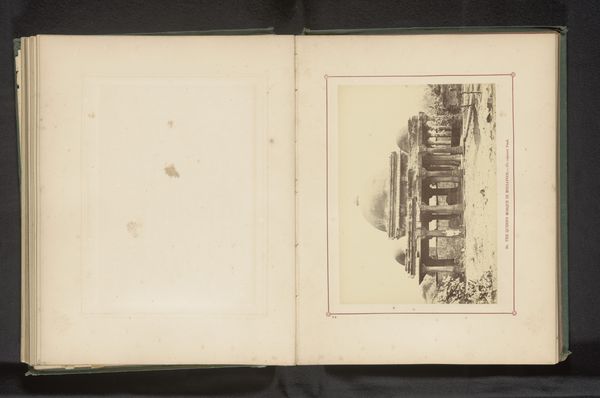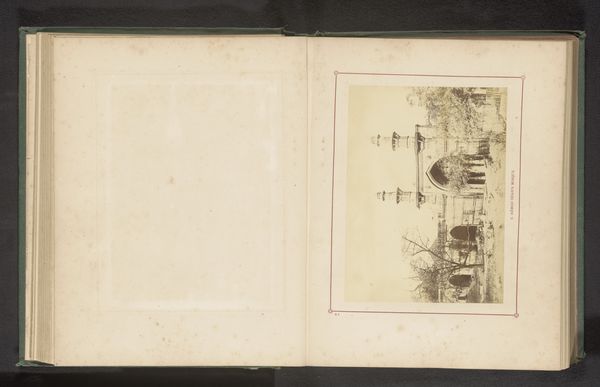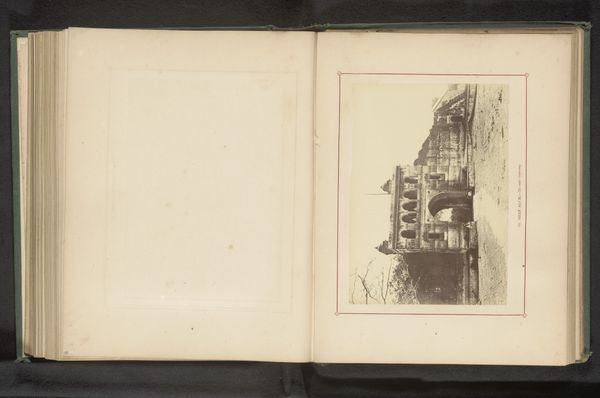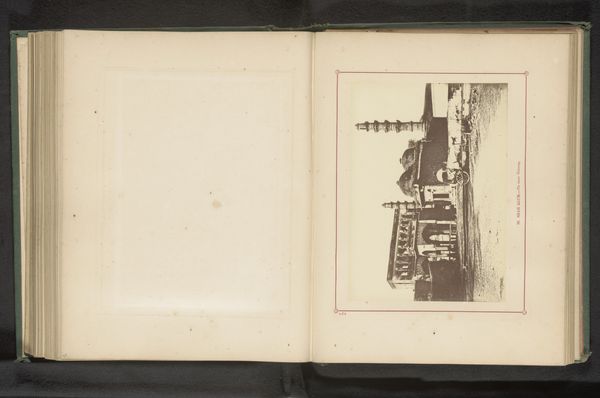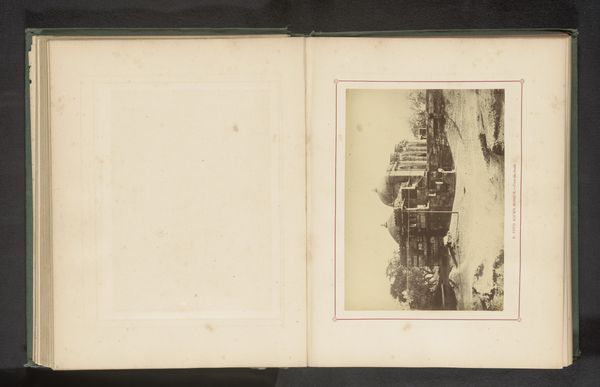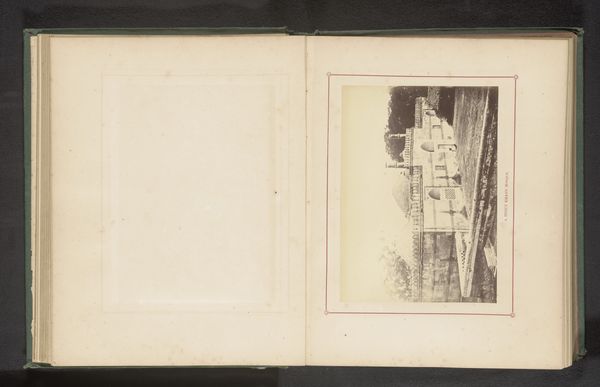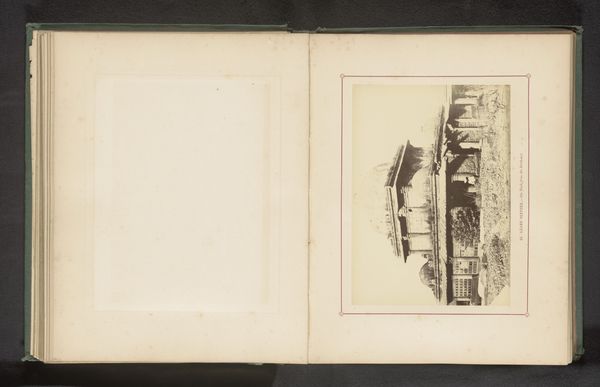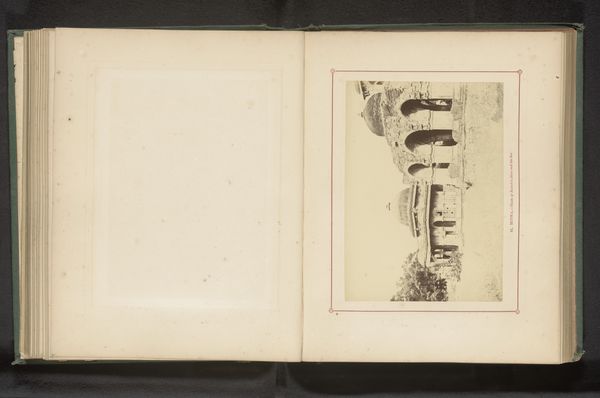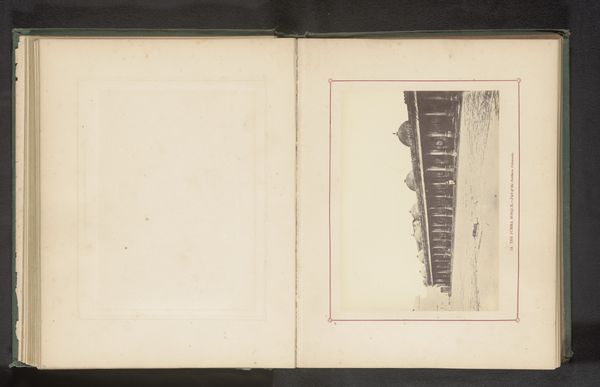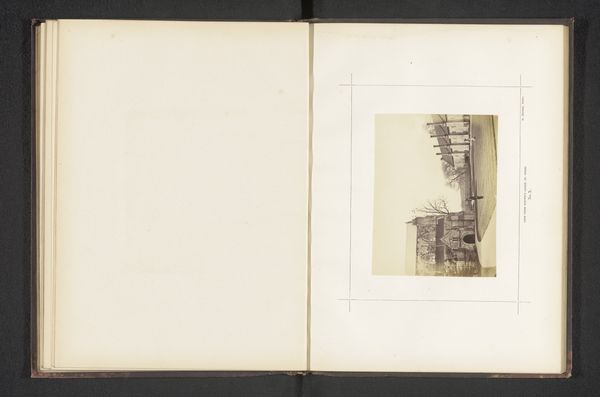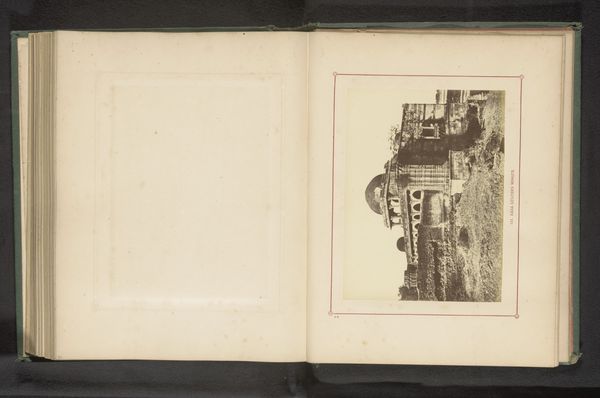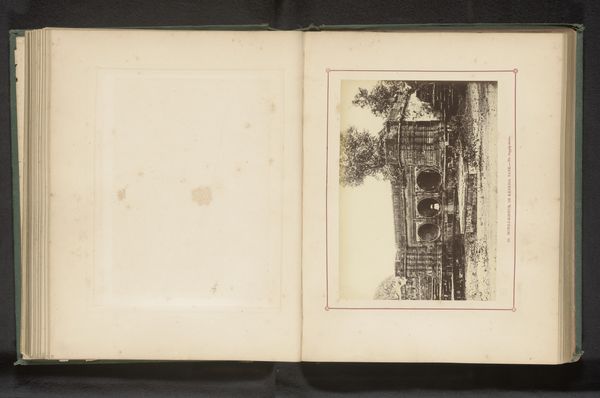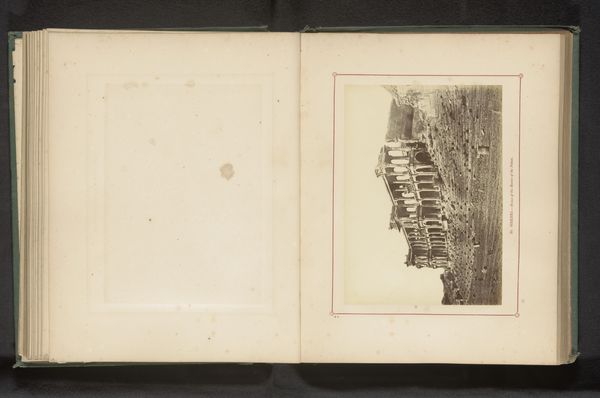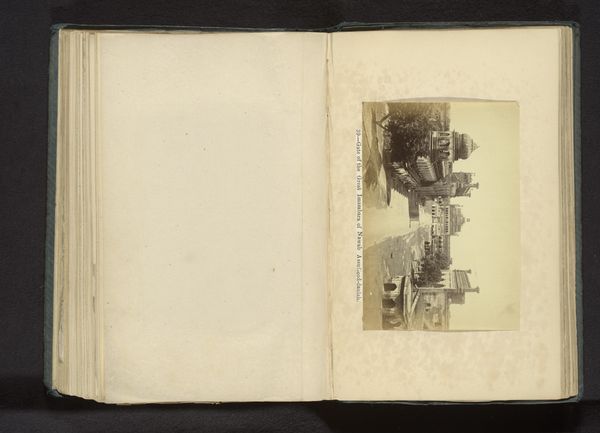
print, photography, albumen-print
#
ink paper printed
# print
#
asian-art
#
landscape
#
photography
#
orientalism
#
albumen-print
Dimensions: height 144 mm, width 197 mm
Copyright: Rijks Museum: Open Domain
Editor: So, this is a photograph from before 1866 by Thomas Biggs titled "Gezicht op een tombe bij Shah-e-Alam's Roza in Ahmedabad," and it's an albumen print. It has such a faded, almost dreamlike quality to it. What stands out to you most in terms of its formal qualities? Curator: The most striking element is the tonal range achieved through the albumen print process. Observe how Biggs manipulates light and shadow to articulate depth. The architecture, framed by foliage, presents a fascinating study in contrasting textures. Note how the light reflects off the dome of the tomb. Editor: The albumen print technique does seem important here, creating this faded but sharp tonality... Could we call that Orientalist in style? Curator: Precisely. The soft focus and sepia tones contribute to an aesthetic that evokes a sense of romanticism and the exotic, qualities often associated with Orientalist art. What compositional elements do you observe that reinforce this stylistic approach? Editor: Well, there's the framing with trees on the upper left...and the composition feels staged somehow... symmetrical, balanced... even posed. Curator: Indeed. The careful arrangement of elements within the frame – the balance between architectural mass and natural form – reveals a conscious artistic intention to capture not merely a record of a place, but a particular visual experience of it. Consider the way the perspective lines converge towards the tomb, guiding the viewer's gaze. Editor: That makes perfect sense. Looking at the converging lines...I'm starting to think that it could be described as dramatic...rather than "posed," per se... So, beyond the aesthetics and tonal balance, how does the print’s materiality, that is, the specific use of the albumen process, affect its meaning? Curator: The albumen print, as a photographic medium, allows for a high level of detail and a wide tonal range, which enhances the sense of realism while also contributing to the dreamlike atmosphere we discussed initially. This materiality underscores the tension between objective representation and subjective interpretation inherent in the work. Editor: That's fascinating. I hadn't thought about the interplay between realism and that "dreamlike atmosphere" before, and how it's a function of both the composition and the printing process itself. Curator: This analysis exemplifies how a close reading of formal elements can enrich our understanding of a work of art.
Comments
No comments
Be the first to comment and join the conversation on the ultimate creative platform.
